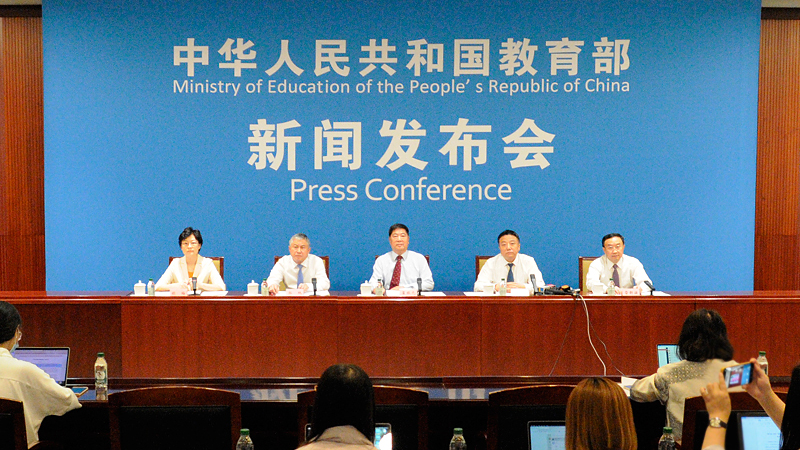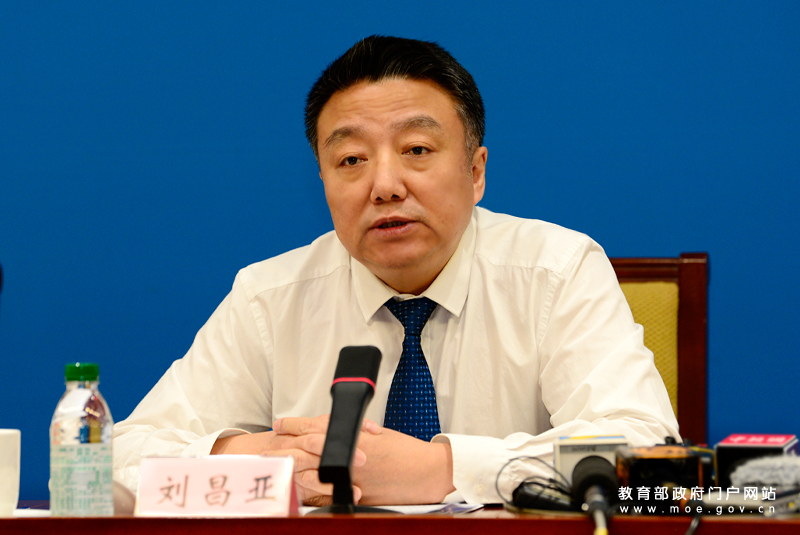
Officials from the Ministry of Education brief the media on China's educational achievements in the past decade, Beijing, China, September 27, 2022. /China's Ministry of Education
Officials from the Ministry of Education brief the media on China's educational achievements in the past decade, Beijing, China, September 27, 2022. /China's Ministry of Education
Over 6,000 new schools have been established while over half a million new students enrolled in special education schools across China in the past decade, according to statistics shared by an official from the Ministry of Education during a press conference on Tuesday.
Reflecting on China's educational achievements in the past decade, the ministry's official Liu Changya explained how China has prioritized education as part of its strategic development plan.
China's education has achieved remarkable progress and it will likewise go on a new adventure in the future, Liu noted.

Liu Changya, director of the Department for Development Planning, the Ministry of Education, addresses a press conference in Beijing, China, September 27, 2022. /Ministry of Education
Liu Changya, director of the Department for Development Planning, the Ministry of Education, addresses a press conference in Beijing, China, September 27, 2022. /Ministry of Education
Liu shared data from seven perspectives: popularization, equity, standards, service capacity, quality assurance, teacher team building, and international educational cooperation and opening-up to the world.
The number of schools of all types has increased by more than 6,300 over the last decade. The net enrollment rate of elementary schools has increased from 99.85 percent to more than 99.9 percent and the gross enrollment rate of junior high schools has remained 100 percent while achieving full universal access. Education at all levels has approached or exceeded the average level of middle- and high-income nations, with compulsory schooling reaching the intermediate level of high-income countries. Higher education has made a historic leap from mass to universalization, Liu noted.
He also said that children and adolescents of school age with disabilities now enjoy greater educational opportunities. With the implementation of the special education upgrade plan, all counties with a population of 300,000 or more now have special education schools, with a total of 920,000 special education students, up 541,000 increase over 2012, and the compulsory education enrollment rate of school-age children with disabilities has surpassed 95 percent.
Children in China's less developed central and western regions, as well as in rural areas, have greater access to good universities, Liu said. The total number of people admitted to major colleges through the national special enrollment program for rural and underdeveloped areas has surpassed 950,000.
Liu said that governmental spending on education remained above 4 percent of GDP in the past 10 years, with education becoming a primary expenditure item on the general public budget. He also briefed the press on the improvements in teaching facilities and the school information and communication technology setup in general.
Meanwhile, China has insisted on developing high-quality teaching force, and the number of teachers continues to grow, Liu said. In 2021, there were 18.44 million full-time teachers at all levels and in all types of schools nationwide, an increase of 26.2 percent over 2012.

